Creating a beautiful garden is an enchanting journey, and one of the most captivating elements is the border. A well-planned garden border can frame your garden, drawing the eye and providing a transition between different areas. But if your garden is primarily in the shade, you may feel limited by your plant choices. Fear not! There is a wealth of stunning shade garden border plants to consider.
Astilbe
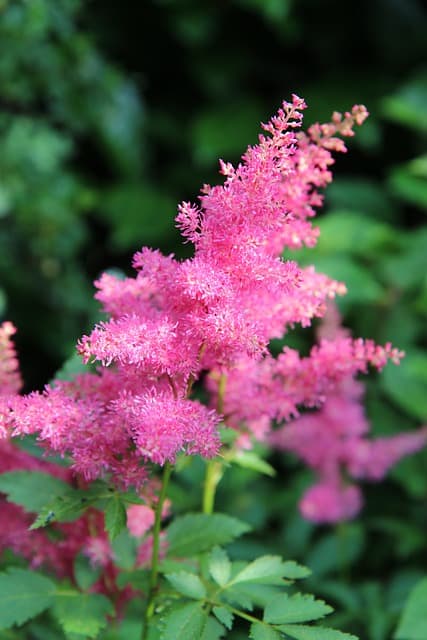
Astilbe is an exceptional plant for a shade garden, celebrated for its feathery flower spikes that add height and texture. Available in shades of pink, red, and white, astilbes bloom throughout the summer, creating a colorful display that contrasts beautifully with rich green foliage. They prefer a moist environment, making them perfect for borders where they can receive consistent water.
Caring for astilbe is simple; just ensure they’re planted in well-draining soil enriched with organic matter. They thrive in partial to full shade, making them ideal for planting under trees or beside shady patios. Beyond their aesthetic contributions, astilbe also attracts pollinators like butterflies, making your garden not only beautiful but also lively.
Coral Bells
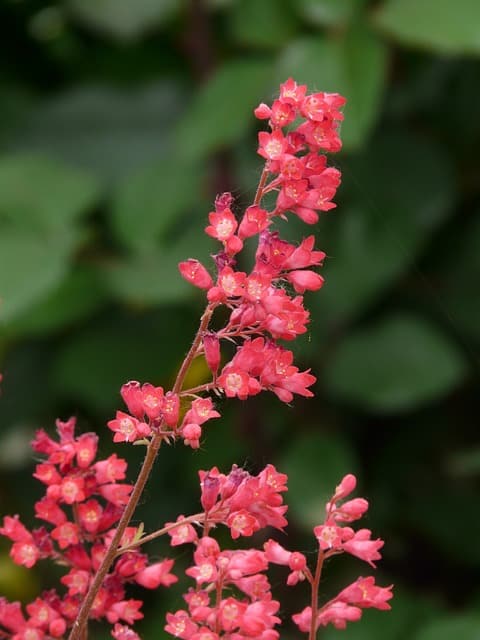
Heuchera, commonly known as coral bells, is a versatile and vibrant addition to any shade border. The foliage is particularly noteworthy, coming in a variety of colors such as deep burgundy, lime green, and silvery gray. This diversity allows coral bells to complement other plants while also serving as a stunning focal point.
Coral bells are prized for their adaptability; they can thrive in different soil types as long as there is good drainage. They do well in partial to full shade and are relatively low-maintenance, needing only occasional watering, especially in drought conditions. With their delicate flower spikes that rise above the foliage, coral bells create a layered look in borders, adding visual interest throughout the growing season.
Japanese Forest Grass
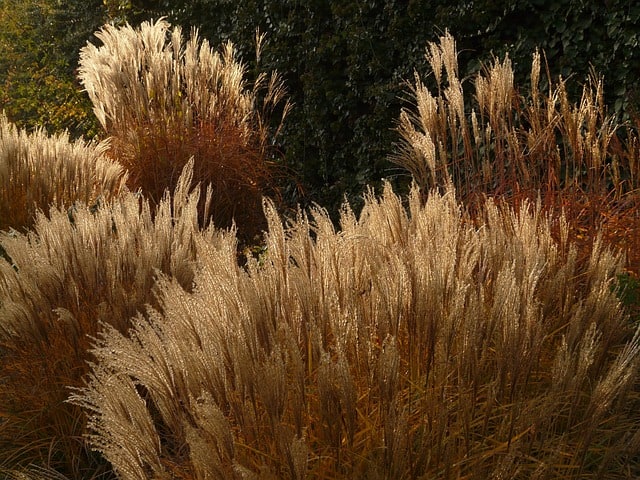
For an airy and graceful touch, consider adding Japanese forest grass (Hakonechloa macra) to your shade garden. This ornamental grass is renowned for its elegant arching form and striking variegated leaves that yield hues of gold, green, and cream. Its seasonal changes, particularly when the leaves turn golden in autumn, enhance the dynamic beauty of garden borders.
Japanese forest grass is incredibly versatile and can thrive in a variety of soil conditions, although it prefers moist, well-drained soil. It flourishes in partial to full shade and can even thrive in dry shade once established. This grass pairs effortlessly with bolder plants, creating a soft contrast, while its swaying foliage provides movement and life to the landscape.
Candytuft
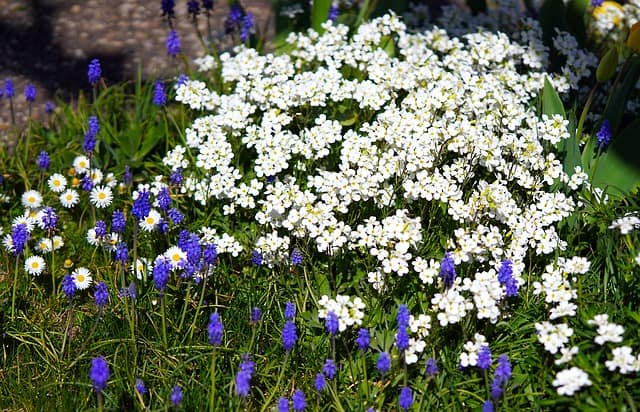
Iberis, or candytuft, is a charming perennial that brings a cheerful burst of white or pink blooms to shaded borders. Blooming in early spring, this plant offers an exuberant display that can serve as a refreshing contrast to darker foliage. Candytuft tends to produce dense mats of low-foliage, which makes it ideal as a border plant or ground cover.
This hardy perennial prefers well-drained soil and prefers leaning towards drier conditions once established. While it tolerates a bit of shade, it will reward you with more abundant blooms in sunnier areas. These cheerful little flowers not only add beauty but are also known to attract beneficial insects, enhancing the ecology of your garden.
Yellow Archangel
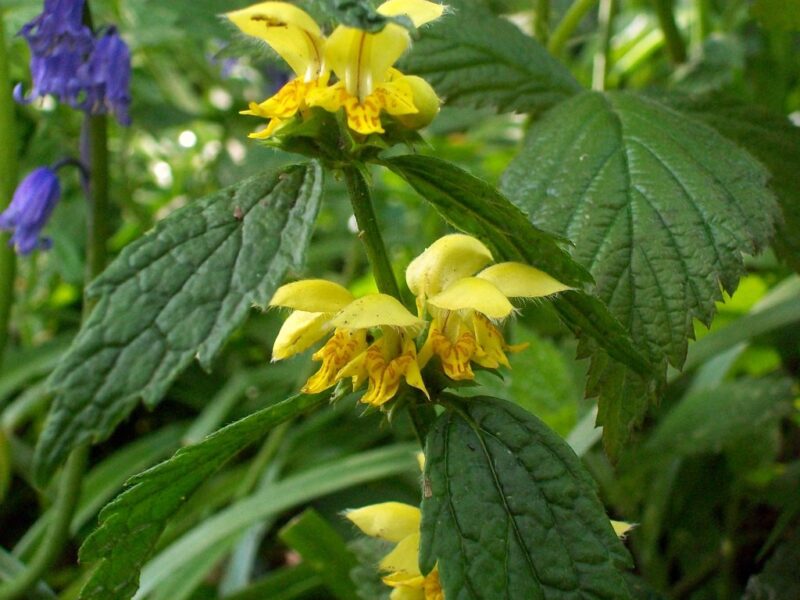
Looking for a reliable groundcover that adds a splash of color? Yellow archangel (Lamiastrum galeobdolon) could be your answer. This plant features striking yellow flowers that emerge in the spring and provide a cheerful accent in shady areas. Its vibrant green leaves are often variegated with silver, making it an attractive choice throughout the growing season.
Yellow archangel is noted for its robust growth, making it an excellent choice for filling bare spots under trees or in shady borders. It’s important to keep in mind, though, that it can spread rapidly. Therefore, regular maintenance is necessary to keep it in check. This plant is also quite hardy and tolerant of various soil types, thriving in partial to full shade.
Siberian Bugloss
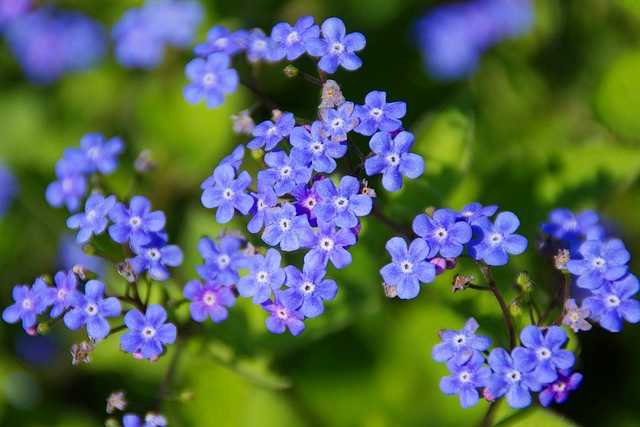
Siberian bugloss (Brunnera macrophylla) is another delightful addition to any shade garden border. Often referred to as false forget-me-not, this perennial boasts large heart-shaped leaves and clusters of bright blue flowers in early spring that closely resemble true forget-me-nots. Siberian bugloss is excellent for creating a lush, colorful carpet that contrasts beautifully with surrounding foliage.
This plant enjoys fertile, well-drained soil and can handle a variety of light conditions, flourishing best in partial to full shade. It also has the added benefit of being fairly deer-resistant, making it a resilient choice for areas where wildlife may pose a challenge. Once established, its hardy leaves make it a reliable green presence in shady spots that may otherwise seem lifeless.
Lungwort
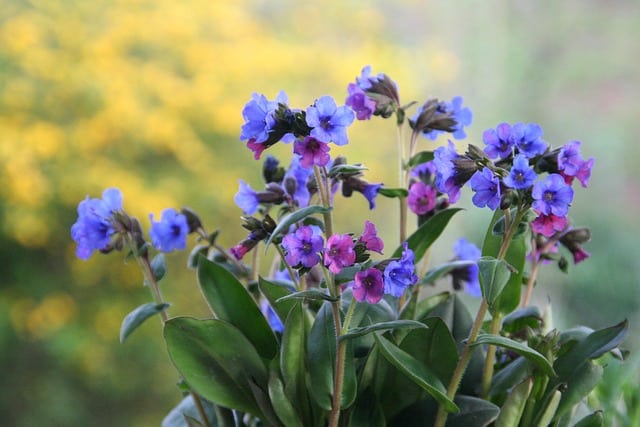
Lungwort (Pulmonaria) is a unique and attractive shade plant that draws attention with its spotted leaves and delicate spring blooms. The flowers, often a mixture of blue, pink, and white, add vibrant color to the shade garden, creating a lively atmosphere. Lungwort is perfect for those looking to add a touch of whimsy to their borders.
It thrives in moist, well-drained soil and does well in areas with partial to full shade. Lungwort is also known for being one of the first flowers to bloom in spring, providing a welcome splash of color after the long winter months. Additionally, its foliage can remain evergreen in some climates, providing visual interest even in the winter.
Lamium
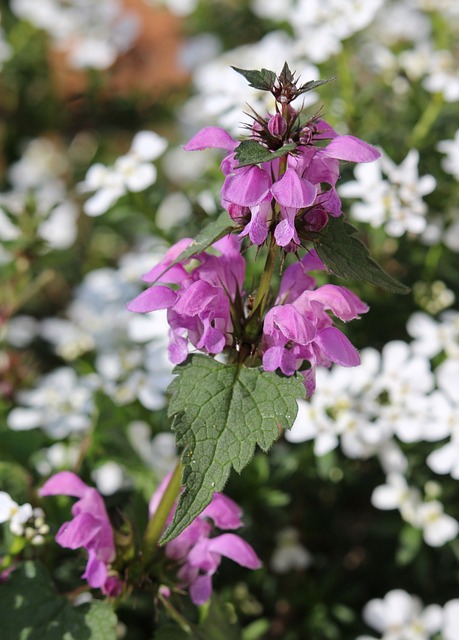
Lamium, or dead nettle, is a prolific ground cover that brings vibrant color and texture to shady areas. With its silvery leaves and cheerful flowers ranging from white to pink and purple, lamium makes for an attractive option for garden borders. Its ability to thrive in difficult conditions, including poor soil and dry shade, makes it a wonderful choice for beginners.
This hardy perennial spreads quickly and can be used to fill gaps or soften hard edges in borders. However, caution is advised to prevent it from becoming invasive. Regular pruning will help maintain its shape and encourage new growth. Lamium is also appreciated for attracting pollinators, adding life and movement to your shade garden.
Lenten Rose
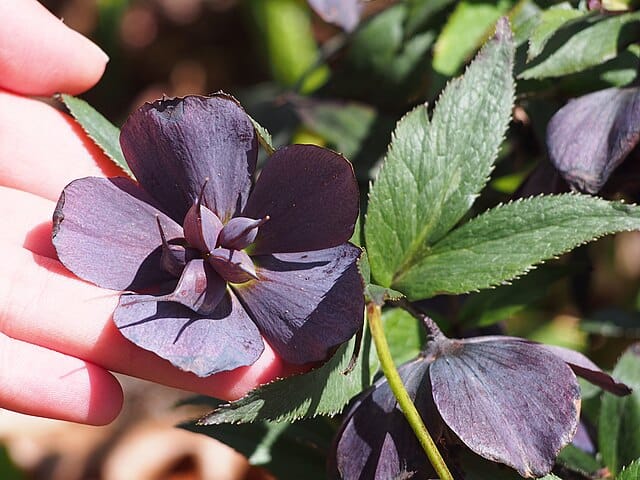
Helleborus, commonly known as Lenten rose, is a stunning shade perennial that brings elegance to any garden border. Renowned for its long-lasting blooms, which can appear as early as late winter, Lenten rose features exquisite flowers that come in a range of colors, from deep purple to pale pink and creamy whites. Its leathery green leaves add another layer of interest throughout the remainder of the year.
This plant thrives in well-draining soils and prefers partial to full shade. Its resilience allows it to tolerate varying light conditions, which is a plus for beginner gardeners. Lenten rose’s low maintenance requirement is a further draw, as it can adapt to neglect once established. This plant not only beautifies your garden but also serves as an early nectar source for bees emerging from hibernation.
Japanese Painted Fern
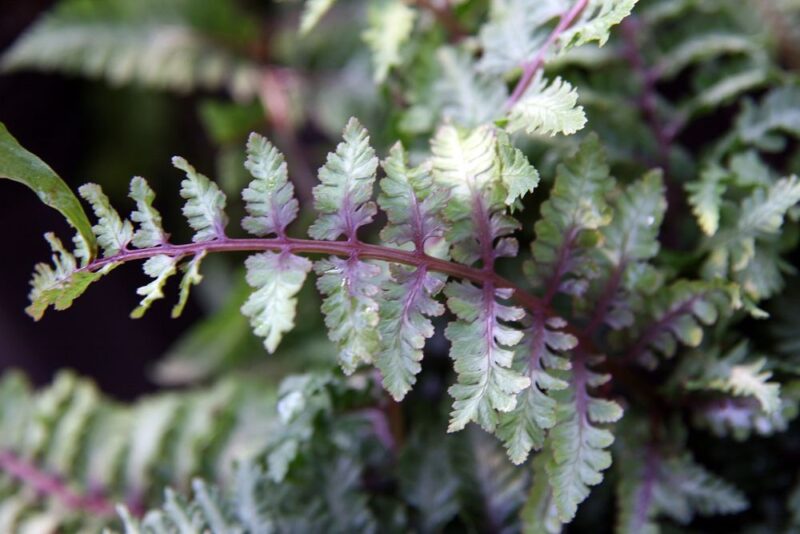
With its gracefully arching fronds and stunning silver-blue coloration, the Japanese painted fern (Athyrium niponicum) is a showstopper in any shade garden. This fern’s intricate foliage adds texture and a subtle shimmer, making it a captivating border plant. The aesthetics of the Japanese painted fern can elevate the overall look of your garden landscape.
Ferns like this one prefer moist, well-drained soil and can tolerate a range of shade conditions, from light to full. Their hardiness allows them to flourish in various environments, including woodland gardens and shaded areas among other plants. Japanese painted ferns are excellent companions for other shade plants, providing contrast and depth to any border design.
Foamflower
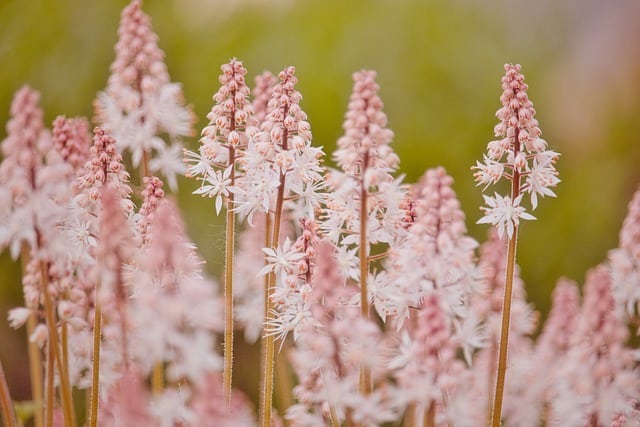
Foamflower (Tiarella cordifolia) is a charming ground cover known for its charming, foam-like clusters of small white to pink flowers. Emerging in late spring, the delicate blooms rise above heart-shaped leaves, creating a soft, frothy effect that adds whimsy to any shady space. It thrives in woodland settings, making it a popular choice for shady borders.
This perennial thrives in rich, well-drained, and consistently moist soil, albeit it can tolerate drier conditions once established. Foamflower prefers partial to full shade, making it an excellent addition near larger plants or areas where sunlight is limited. It’s also relatively low-maintenance, requiring only light watering and occasional division to encourage new growth.
Dead Nettle
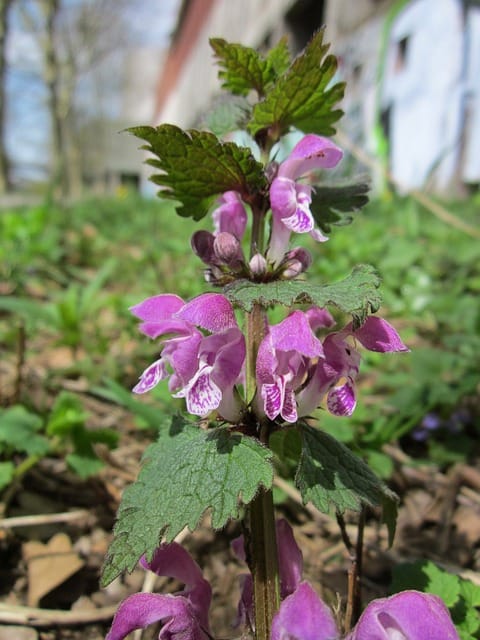
Dead nettle (Lamium purpureum) is not just a charming addition to the shade garden; it’s also a beneficial plant for wildlife. With its colorful spring blooms ranging from white to lavender, this perennial provides nectar for bees and other pollinators, contributing to a healthy ecosystem.
This hardy plant flourishes in well-drained soils and does well in various shade conditions. Dead nettle is excellent for ground cover, helping prevent soil erosion in shady areas while simultaneously creating a lush appearance. Its vigorous growth means it can fill spaces quickly, but it’s also manageable, making it an appealing choice for beginner gardeners looking for low-maintenance options.
Alchemilla Mollis
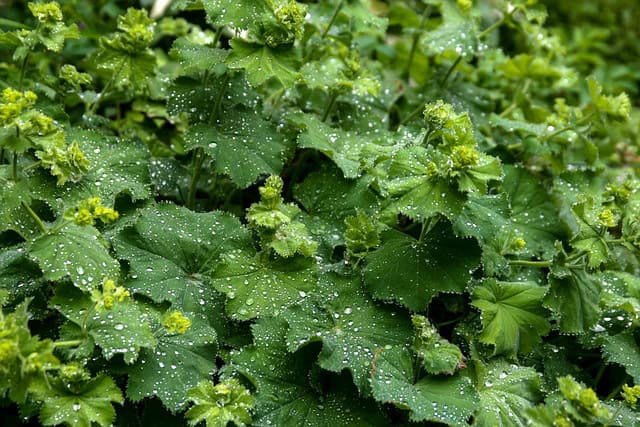
Lady’s mantle, or Alchemilla mollis, combines both beauty and utility in your shade borders. Known for its soft, rounded leaves and delicate chartreuse flowers, this perennial provides a lovely contrast against other flowering plants. The leaves even collect dew, creating an enchanting effect in early mornings, and the foliage is sometimes used in floral arrangements, adding further value.
This plant thrives in partial to full shade and prefers moist, well-drained soil. Once established, lady’s mantle can handle periods of drought without much fuss, making it a good option for beginners. Its low maintenance requirements and ability to spread gently make it a lovely addition to borders where its soft texture and charming flowers can shine.
Bleeding Heart Vine
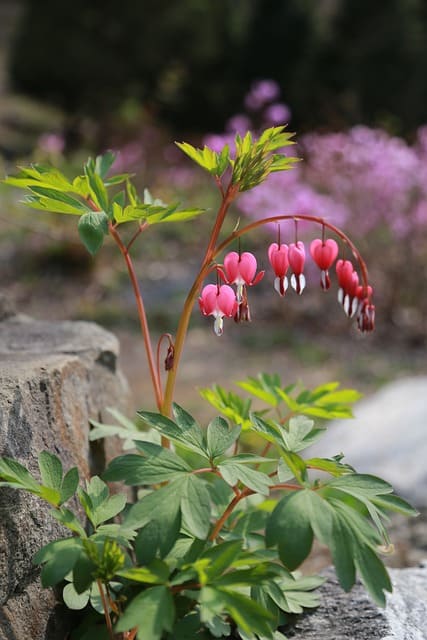
For a dramatic flair, consider adding the bleeding heart vine (Clerodendrum thomsoniae) to your shade garden. With striking, heart-shaped flowers that dangle from slender stems, this perennial captivates viewers, turning heads in any garden. The red and white blooms create an eye-catching combination against the lush green foliage.
While it prefers partial shade, it’s important that the bleeding heart vine is planted in rich, well-drained soil to thrive. Its ability to climb can add verticality to your borders, while the stunning blooms provide cheerful pops of color from spring to summer. This plant works well with other shade-loving plants, providing a striking contrast to the softer foliage of other border plants.
Columbine
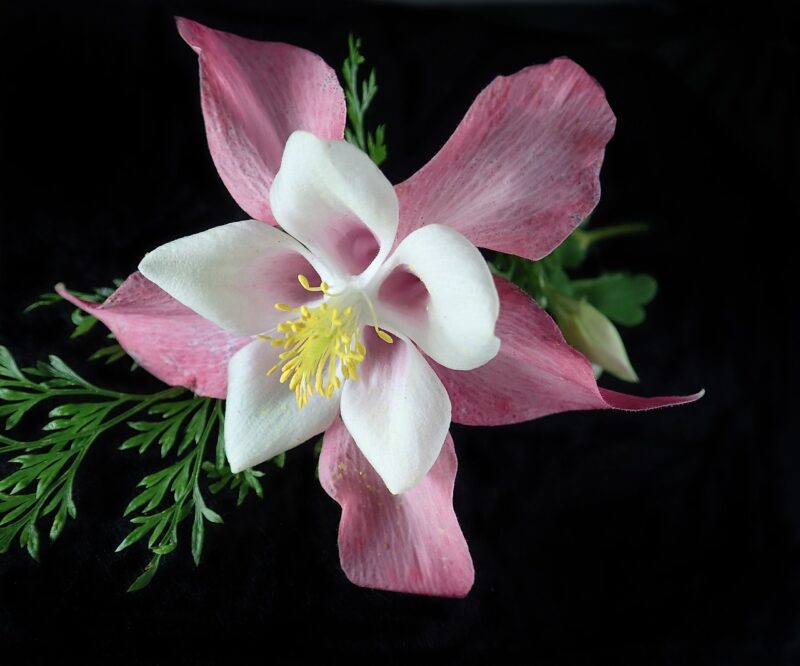
Finally, consider the elegant columbine (Aquilegia) for your shade garden. With its unique, intricate flowers that come in a range of colors, including blue, yellow, red, and white, columbine steals the show with its graceful nodding blooms. This perennial’s delicate silhouette is ideal for adding a whimsical touch to shaded borders.
Columbines prefer well-drained, moist soil and thrive in partial shade, making them perfect for dappled sunlight conditions. Once established, they require minimal maintenance, making them an excellent choice for beginners. Their flower shape also attracts hummingbirds and various pollinators, bringing additional life and vibrancy to your shaded garden.





